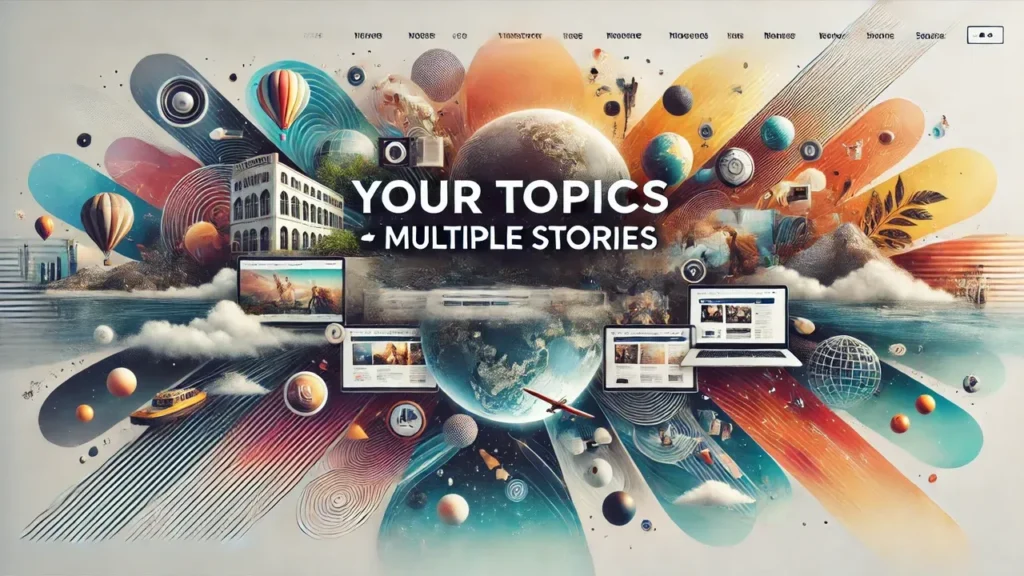In the digital age, a simple phrase can open up a world of content. One such phrase — “your topics multiple stories” — might sound broad, but it carries within it the power to inspire writers, creators, and readers alike. It suggests not just variety, but potential. In this article, we explore how diverse topics become the seeds of compelling stories, and how you can use this approach to connect ideas across categories like technology, lifestyle, culture, and imagination.
The Power of Many: What “Your Topics Multiple Stories” Really Means
“Your topics multiple stories” isn’t just a phrase — it’s a mindset. It means taking ownership of your interests and transforming them into narratives that matter. Whether you’re passionate about food, fascinated by technology, or curious about obscure websites, every topic you choose has multiple paths it can take. Some might become informative blog posts; others, fictional journeys.
At the heart of it is a truth all writers and storytellers know: no topic is too small or too strange to become a great story — if you tell it well.
From Data to Drama: SSIS 816 as a Digital Mystery
Take for example the topic SSIS 816 — a reference to Microsoft’s SQL Server Integration Services. On its own, it’s technical and niche. But through the lens of “your topics multiple stories,” it became more than a product update.
Writers turned it into a digital mystery: What is SSIS 816? Why was it trending? What does it mean for developers and businesses? These questions gave life to a story filled with tension, discovery, and resolution — all built from a dry technical term.
That’s the magic of storytelling. It lets you pull drama from data and emotion from information.
Culture on a Plate: The Story of Çeciir
In another direction, we have Çeciir, a traditional Turkish snack. On the surface, it’s about food — but beneath that lies heritage, memory, and comfort. When someone chose this as one of “your topics,” it blossomed into multiple stories: one about family recipes, another about regional traditions, and a third about how food connects us in a fragmented world.
It’s a reminder that when you share a topic you love, you’re not just explaining — you’re inviting readers to experience something with you.
Aesthetic Movements: The Rise of Baddie Culture
Under the umbrella of “your topics multiple stories,” fashion isn’t just clothes — it’s communication. The rise of the “baddie” look, discussed through platforms like Baddiehub, Eromecom.org, wasn’t just a fashion trend; it became a story about confidence, online identity, and reclaiming beauty standards.
One article might focus on how to build a “baddie wardrobe.” Another might dive into the cultural roots of the trend. A third could explore the criticism it receives and why. All from the same topic — all telling different stories.
Strange Domains, Big Ideas: Lab-banana.com and WinNoise
Some of the most fascinating examples of “your topics multiple stories” came from bizarre or unexplained domain names like Lab-banana.com or WinNoise. These weren’t major brands or trending topics. They were mysteries. That gave writers the freedom to imagine.
One story imagined Lab-banana.com as a secret AI experiment gone wrong. Another turned WinNoise into a forgotten sound tool from the early internet. Both examples showed how creativity thrives in the unknown. When there’s no single meaning, there are endless stories.
Real People, Real Stories: Kate Mara and Jeinz Macias
Sometimes, your topics are about real people — celebrities or artists like Kate Mara or Jeinz Macias. And even here, “your topics multiple stories” applies.
An article about Kate Mara might focus on her acting career. Another might explore her environmental activism. A third could analyze her role choices and what they say about Hollywood’s evolution.
Likewise, Jeinz Macias could be introduced through his music, his background, or how his songs resonate with youth in different countries. One name — many stories.
Forgotten Websites and Digital Archaeology
Not all stories are trending. Some come from the shadows of the web — sites like Semanticlast.com or Findutbes. These odd and often empty sites become jumping-off points for speculative writing.
Are they defunct platforms? Lost internet art? Hidden projects waiting to be discovered?
With “your topics multiple stories” as your creative guide, these strange digital corners transform into adventures. One writer might craft a fictional thriller about a hacker site. Another might trace the digital decay of forgotten pages and ask, “What do we lose when websites disappear?”
Lifestyle, Tech, Culture, and More: Mixing Genres
The beauty of “your topics multiple stories” is that it encourages blending. A single article can start with a fashion trend, connect it to tech (via TikTok filters), dip into cultural identity, and finish with a personal anecdote.
This is the kind of storytelling readers crave today — rich, layered, and honest. The world isn’t divided into neat categories, and neither should your stories be.
Your Voice, Your Vision
Ultimately, “your topics multiple stories” is about authorship. It’s about choosing what matters to you, then finding new ways to share it. It empowers you to look at a keyword not as a limit, but as a beginning.
Every story doesn’t need to go viral or solve a mystery. Sometimes, it just needs to be told. Your unique perspective — your humor, your insights, your questions — is what makes a topic come alive.
Conclusion: More Than Just Keywords
When we hear the phrase “your topics multiple stories,” we might think of a writing challenge or SEO strategy. But it’s far more than that. It’s a creative philosophy. It reminds us that behind every term, there’s a tale waiting to be told.
So the next time you sit down to write, ask yourself not what the topic is — but what kind of story it could become.


